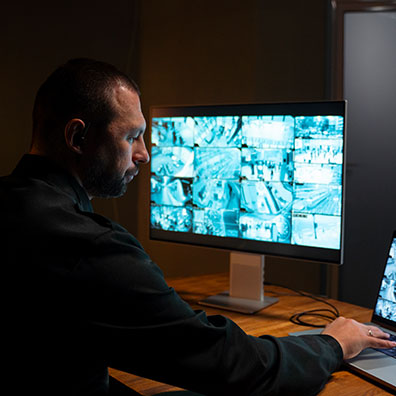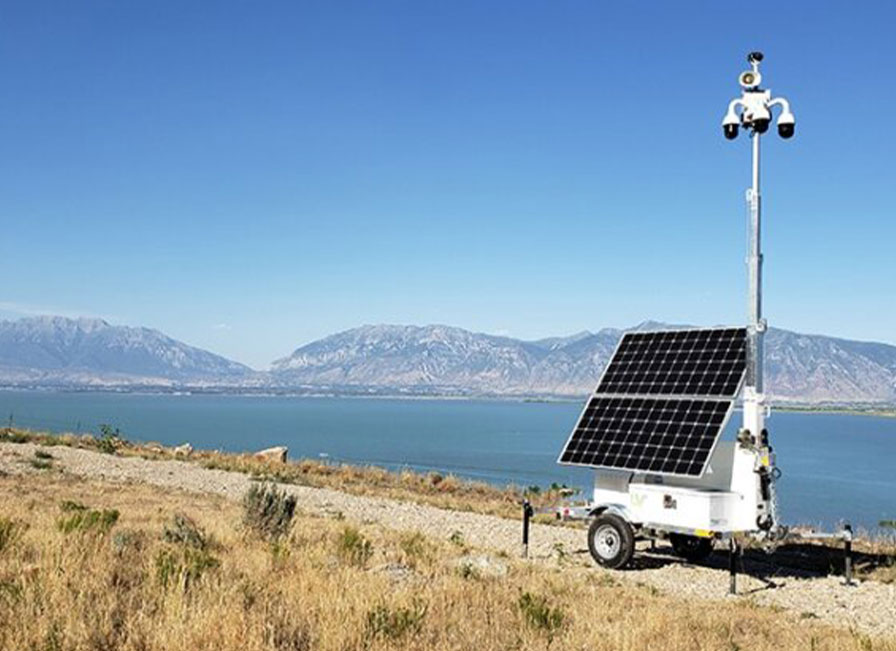Visual monitoring is changing how companies keep people, places, and property safe. Instead of relying only on guards and locks, businesses now use smart cameras and software to get clear, useful information in real time. These systems don’t just record; they analyze, alert, and help teams act faster. That means fewer blind spots, quicker responses, and stronger records when something goes wrong. From small shops to large warehouses, visual tools give managers a steady view of what matters most. In this blog, we’ll break down how the tech works, where it helps most, and what to consider before rolling it out—using simple terms, practical examples, and key points you can apply right away.
Why Visual Monitoring Matters
Traditional security often reacts after an incident. Visual monitoring adds a steady, proactive layer. Cameras paired with analytics can spot patterns—such as loitering, line buildup, or off-hours access—and notify staff in seconds. This reduces guesswork and lets teams focus on real issues, not endless screens. Another benefit is consistent documentation. High-quality footage linked to time and location helps resolve disputes and meet audit needs. For multi-site companies, centralized dashboards bring remote locations into one pane of glass. Visual data also supports safety: spotting blocked exits, spill hazards, or forklift near-misses. When used well, visual monitoring turns everyday scenes into usable signals—clear cues that help people act with confidence and speed.
Core System Building Blocks
A strong visual setup has four main parts: cameras, storage, analytics, and display. Cameras vary by use: fixed dome units for indoor halls, bullet cameras for perimeters, fisheye lenses for wide rooms, and PTZ models to zoom or track activity. Storage can be on-premises (NVRs), in the cloud, or both. Hybrid setups keep critical footage local while archiving long-term recordings offsite. Analytics engines run on the edge (inside the camera) or on servers, where more power is available. Displays include video walls, desktop apps, and mobile dashboards. Pick network gear that supports Power over Ethernet (PoE) to simplify cabling. Finally, plan for bandwidth: higher frame rates and 4K streams need stronger links, but variable bitrate (VBR) helps control network load.
Smart Analytics, Plain English
Modern systems use computer vision to recognize objects and motion patterns. Rather than saving every second, they extract features: the shape of a person, a vehicle type, or a package left behind. Rules then turn those features into alerts. Useful examples include:
- Line crossing: Notify when someone enters a restricted area.
- Object counting: Track visitors, vehicles, or pallets.
- Anomaly cues: Flag unusual motion after hours.
- Masking and zones: Ignore moving trees; watch the gate.
Accuracy depends on lighting, angle, and training data. Good setups test analytics in day and night scenes, then tune thresholds. Edge analytics reduces latency and bandwidth; server analytics allow heavier models. Many teams start simple—motion plus line crossing—then add advanced rules as confidence grows.
Real-Time Alerts That Help
Alerts should be timely, clear, and actionable. A flood of pings makes people ignore them, so focus on quality over quantity. Link each alert to a short clip and a live view button. Include key fields: camera name, location, time, and rule triggered. Set schedules to avoid warning staff about normal daytime crowds. Tier notifications by severity—SMS for after-hours access, email summaries for people counting trends, and app push for perimeter breaches. Pair alerts with response playbooks:
- Who gets notified first and second?
- What to check on video and on site
- When to escalate or call authorities
- How to log the outcome
This simple structure turns raw signals into predictable action, cutting response time and improving results.
Remote Viewing and Control
Managers can’t always be on site. Secure remote access brings cameras, alerts, and playback to phones and laptops. Use multi-factor authentication and role-based access to control who sees what. For low bandwidth links, select sub-streams—lower resolution feeds used for quick checks—then switch to the full stream when needed. Cloud portals help multi-location firms standardize settings and share incident clips without bulky files. PTZ control over the network lets teams zoom to license plates or read a badge from a safe distance. Audit logs record who viewed or downloaded footage. When staff travel, geofenced alerts can route to the on-duty team, while managers receive daily summaries. The result is constant awareness without constant presence.
Integrating With Existing Systems
Visual monitoring works best when it connects to other tools. Common links include:
- Access control: Match a badge swipe with a face at the door.
- Intrusion panels: Start recording at higher frame rates during alarms.
- POS systems: Tag transactions to video to review refunds or voids.
- Logistics software: Tie dock events to camera clips for claims handling.
API-ready platforms allow these bridges without custom code for each step. Use webhooks to send events into chat tools or ticketing systems. Keep data formats simple: timestamps in UTC, camera IDs, and event types. For scale, message queues handle bursts of alerts without dropping signals. Finally, map integrations in a diagram: what triggers what, who owns each system, and how failures are handled. Good integration turns video from a silo into a shared, trusted context.
Privacy, Policy, And Compliance
Responsible use builds trust. Start with a clear policy: where cameras are placed, how long footage is kept, and who can access it. Avoid areas like restrooms or private meeting rooms. Post notices where required, and follow local laws on audio recording. Use privacy masking to block out neighboring windows or public sidewalks. Encrypt streams in transit (TLS) and storage at rest. Apply least-privilege access: staff see only the cameras they need. Keep audit trails of exports and deletions. Retention varies by risk: high-value areas may keep 90 days; low-risk halls might keep 14. For requests from law enforcement or auditors, have a standard process with manager approval. These steps protect people while keeping security strong and fair.
Measuring Value And ROI
Visual monitoring should pay off in clear ways. Track a few base metrics before and after rollout: incident counts, response time, shrinkage, and false alarm rates. Add operational measures like dwell time at docks or queue length at service points. A simple ROI sketch might include: fewer guard hours on routine patrols, fewer losses from theft, and faster incident resolution. On the cost side, include cameras, storage, licenses, network upgrades, and training. Technical choices affect spend: H.265 compression lowers storage needs; smart recording records at full frame rate only when something happens. Consider device lifespan and warranty terms. Share monthly scorecards with graphs so leaders see progress, not just gear lists. When numbers improve, the value speaks for itself.
Practical Steps to Start
Rolling out visual monitoring can be smooth with a phased plan:
- Assess needs: List goals—safety, theft reduction, or process insight.
- Map sites: Draw camera zones, lighting, and cable paths.
- Pilot first: Test a small area with real shifts and weather.
- Tune rules: Adjust sensitivity, zones, and alert routes.
- Train people: Short sessions on viewing, exporting, and reporting.
- Document: Keep a runbook for setup, passwords, and contacts.
- Review quarterly: Retire bad rules, add useful ones, and update firmware.
Choose vendors with open standards (ONVIF), stable updates, and clear support. Set backup plans for power and links. With steady iteration, you’ll replace noisy alerts with meaningful signals, and a camera grid with a simple, helpful view of your sites.
Closing Thoughts and Next Steps
Visual monitoring is a practical step toward safer, smoother operations. With the right mix of cameras, smart rules, and clear processes, teams get early warnings, better records, and fewer surprises. Start with a focused pilot, tune based on real activity, and connect the system to tools you already use. Keep privacy and policy front and center, and measure results so the program grows with your needs. If you’re ready to plan a setup or refresh an older one, reach out for a quick assessment and site sketch. For helpful guidance and hands-on support, talk to PCI Audio-Video Security Solutions—and turn everyday video into clear, reliable action.


